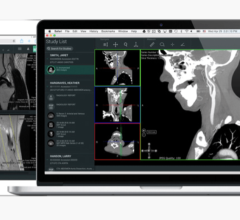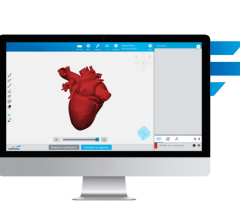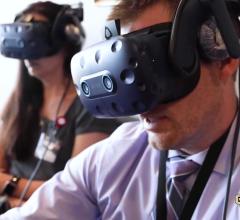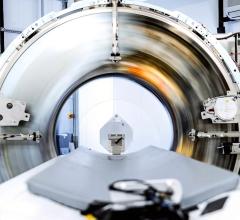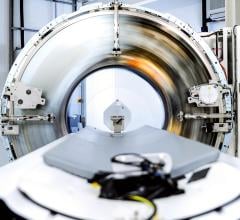The use of advanced visualization software has become a necessity due to the vast image data sets produced by cardiac computed tomography (CT) and magnetic resonance imaging (MR). The technology is known for making pretty, color 3D pictures, but users say the technology goes a long way to help increase efficiency, speed diagnoses, and can guide procedures in the OR and interventional lab.
“There is a huge advantage,” said Ahmed M. Gharib, MB Ch.B., staff radiologist, National Institutes of Health, diagnostic radiology department, Warren G. Magnuson Clinical Center. He specializes in multimodality cardiovascular imaging and uses advanced visualization software from AZE, Vital Images, Philips, Siemens and Toshiba.
“You are not only getting slices through the heart, you are getting 300 slices through the heart, and you are getting 10 sets of images to capture all the phases of the heartbeat,” he said. “So, you have 10 times 300 slices you need to go through.” He said the software eases the upload of the thousands of images and enables easier manipulation of the data sets. “It makes your life easier.”
While each scanner comes with its own proprietary software, Dr. Gharib said issues arise when you want to view images from other manufacturers’ scanners. For that reason, he prefers third-party
advanced visualization systems, which can manipulate images from all CT and MR scanners. He also said third-party systems have more features. “They tend to have an edge, and they try to package everything together in one system,” Dr. Gharib said. The buttons and the format of the third-party systems tend to be similar, but can vary greatly between proprietary systems.
Tony DeFrance, M.D., FACC, interventional cardiologist clinical associate professor at Stanford Medical School, and a board member of the Society of Cardiac Computed Tomography (SCCT), uses software from Vital Images, TeraRecon and Ziosoft to help read CTA and peripheral vascular studies. “These three systems are all very robust — all three are excellent,” he said.
Dr. DeFrance said each has different bells and whistles and they perform much better than the vendor software that comes with the scanners. “I have a lot more control with some of these systems than working with the software from the vendors,” Dr. DeFrance added.
Proprietary systems usually only have three sets of image views. Dr. DeFrance said you can get views from other angles, but it requires pulling lines and manipulating images with extra steps that are not required with third-party software. “I don’t want to spend 10 minutes pulling lines to create an angle,” he said. “(With third-party systems,) I can literally rotate it at many thousands of angles. They are really good at it, and they are easy to use.”
Advanced visualization software also can help cut radiation dose, said Robert Schwartz, M.D., FACC, medical director, Minneapolis Heart Institute, who uses software from Siemens, Vital Images and TeraRecon. He said the multiplaner viewing with these systems allows instant changes in orientation to get a better view of target vessels. In the old days, patients had to be sent back in for additional imaging to get different views, increasing imaging times and radiation exposure. He said Minnesota Heart uses the software in combination with a dual-source CT scanner for CT angiography. The combination cut doses to about 2-3 mSv, whereas a typical CTA dose is 3-5 mSv.
Helping Analyze Images
Dr. Gharib said the software helps visualize the coronary arteries during the cardiac cycle, which is difficult due to the heart’s constant movement. “You are essentially imaging spaghetti jumping on a trampoline, and you are trying to assess the insides of the spaghetti,” he said.
In coronary analyses, the software can extract each vessel for separate evaluation. Dr. Gharib said the software also saves a lot of time by automatically subtracting out surrounding tissue, such as the ribs and lungs. While this is a big time-saver, he said you need to be aware of what the software is removing. “You have to be careful, because software can automatically take things out that you many not want it to take out,” he explained.
The software also can be fooled into subtracting areas of heavy contrast in vessels, or contrast pooling in the tissue. Tumors can sometimes be subtracted from the final images, so he said it is a good idea to reference the source images. “The computer will not do everything for you — you have to check it,” Dr. Gharib said.
He said the software is also very good at taking gated images and piecing them together for cine loops for wall motion and heart valve assessment.
“You download 5,000 images and you put them in the software so you can see the cine loops,” Dr. Gharib said. In the old days, he said CT slices were loaded into the PACS and slices had to be selected and flipped through to create a cine effect. “It’s the difference between watching a cartoon, or flipping the pages to make it look like a cartoon.”
Using 3D Images
Dr. DeFrance uses the 3D images produced by the software to look for gross anatomical problems, such as structural heart issues like ASDs, PFOs or aneurisms. However, he only uses 3D for about 5 percent of his reads. “It’s a lot of show and great for teaching, but it is not good for the day-to-day reviews,” he said. “3D is great for structural heart, and for gross anatomy it’s awesome. But, you can’t use it to look at coronary disease. If you do, you will be wrong a lot.”
The false color 3D images are reconstructions of data based on what the software thinks it should look like, so for a true representation of the anatomy you really need to use the source grayscale, multiplanar review (MPR) images, said Dr. Gharib. “You want to go back to the source images to do your assessment, because the color can be misleading,” he explained. “It’s a huge mistake to do your diagnosis off of the color images.”
However, the colorful 3D images do have a role for procedure planning. Dr. Gharib said cardiac surgeons like to evaluate structural heart problems on 3D prior to surgery so they have a better picture of what they will find in the OR. “Surgeons like it for surgical planning, and they like to review the pre- and post-procedural images to see the functional results,” he said.
The 3D images can also aid in patient education. “The patients love the images — they get to see a great image of their own heart and they get a better understanding of the anatomy. They can see the blockages and they can see why they need the procedure,” said Dr. Schwartz.
Imaging in the Interventional Suite
“There is a huge future in cath lab imaging,” Dr. Schwartz said of advanced visualization. He said CT or MR images can be fused with live cath lab angiography, which will rotate the anatomical image to match the actual anatomy as the C-arm is moved. He said this will be a big help in navigating vessels.
Minnesota Heart already uses the software to help navigate chronic total occlusions (CTOs) and to help with transcatheter structural repair planning. Dr. Schwartz said this will become even more important as transcatheter valve replacements become more common. Minnesota Heart already uses CoreValve in clinical trials and uses advanced visualization for procedure planning and guidance.
“I think it’s incredibly valuable to have the CT data before you go into the cath lab,” said Dr. DeFrance. In addition to guidance, he said CT images help with planning by determining the length of the lesion and vessel diameter. He agrees advanced visualization images are ideal when treating CTOs, because unlike fluoro that leaves cardiologists blind beyond the start of the occlusion, CT scans will show the entire vessel path. This is a big help in determining the length of the occlusion, vessel tortuosity, if there are any side branches and even the degree of calcification.
“You may even decide not to attack that lesion based on the images,” said Dr. DeFrance. He said CT data sets have made him re-evaluate his sizing of stents, usually opting for larger stents.

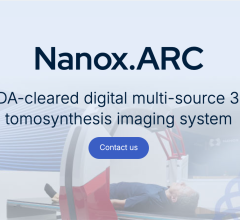
 April 18, 2025
April 18, 2025 


